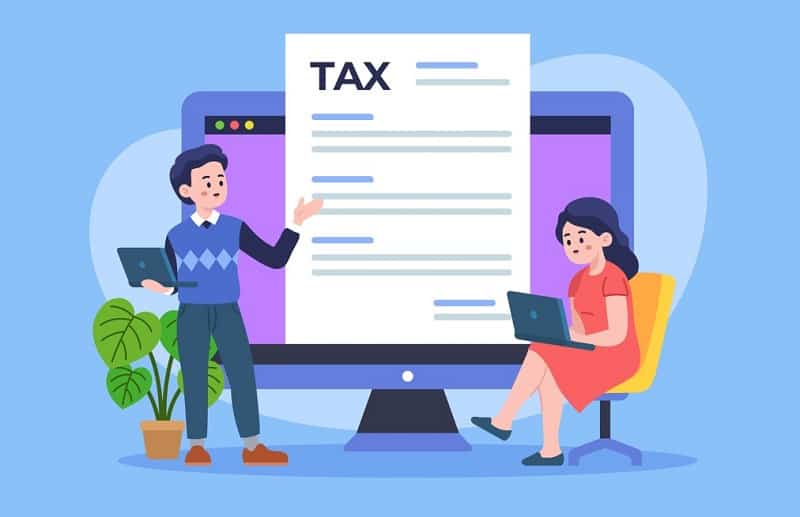
BY
|
How Tax Losses Carried Forward Can Help You Minimise Tax
It’s not uncommon for business owners to experience losses in their business operations.
From a tax perspective, however, this isn’t always a bad thing. The good news is that there are several ways Australian business owners can minimise tax and still keep their companies profitable.
One way is by carrying forward tax loss – which allows business owners to offset previous years’ losses against their current year’s profits to reduce their future net income tax. In addition, as part of the government’s economic recovery plan, business owners can now also carry back their tax offset.
Here’s what you need to know.
How Do You Claim Tax Losses Against Assessable Income?
Companies can carry forward a tax loss indefinitely, and offset it against future income when they see fit to do so, provided they satisfy the requirements set by the Australian Tax Office.
There are three tests that determine whether your company can carry its losses forward to future income years:
- the continuity of ownership test, or
- the same business test, or
- the similar business test.
The Continuity Ownership Test
To carry forward a tax loss, a company must maintain the same majority ownership and control throughout the period from the start of the income year where you incurred the loss and the end of the income year where you incurred income.
Should a company change at least 50% of the majority ownership and control, it will need to satisfy the same business test to carry forward tax losses.
Example
A company incurred a tax loss in the 2018-19 financial year. However, the business was far more successful in the 2020-21 financial year and generated substantial assessable income. Therefore, to help reduce their tax burden, they want to claim a deduction for the 2018-19 tax loss.
The ownership test period begins on 1 July 2018 (the start of the year in which they made a loss) and ends on 30 June 2021 (the end of the year in which they made a profit).
For that period, the company must prove that the same people own shares carrying at least 50% of all voting, dividend and capital rights. If they can prove this, the continuity test is satisfied, and they can claim a deduction for the tax loss.
The Same Business Test
If the company is unable to satisfy the continuity of ownership test, it must satisfy the same business test in order to have their tax losses carried forward.

Where a company’s ownership and control has changed between the year in which they incurred the loss and the year they would like to claim the loss, they must show the ATO that:
- it has carried on the same business activities despite the change in ownership,
- the assessable income against which they want to deduct the tax loss must not have been derived from a business they didn’t carry on before the change in ownership, and
- the assessable income against which they want to deduct the tax loss must not have been derived from a transaction they didn’t carry on before the change in ownership.
Example 1
Suppose a company owns and operates a French restaurant that is not very successful. As a result, they decide to change ownership of the restaurant, and the new owners decide to convert the restaurant to an Italian-inspired one. In that case, they would not satisfy the same business test and the losses can’t be carried forward.
Example 2
Frank owns a nail salon which is making losses and had carry forward losses in the previous years. Frank then sells the business to an acquaintance, Michael. The new owner Michael carried on the nail salon in the same manner and did not make significant changes to the business model. The following financial year, the business made a profit. The profit can be offset by the previous year’s carry forward losses because it passes the same business test.
The Similar Business Test
Due to the rigid conditions imposed by the same business test, companies struggled to carry forward and deduct their tax losses. If the business operations were not identical to how they were before the change of ownership, they would fail the same business test.
So, the ATO introduced a similar business test in an effort to introduce flexibility into the determining factors. Essentially, if a company can prove that they are at least carrying out similar business operations now as they were at the time of the loss, they can deduct the loss.
The new rules were introduced in 2017 but apply retroactively from 1 July 2015.
However, there are no hard-or-fast rules indicating what similar business activities actually entails. So, it’s important to seek professional advice before relying on the new test.
Can Sole Traders and Partners Deduct Their Tax Loss?
Yes, sole traders and partners are also allowed to deduct business losses from their personal assessable income. However, the requirements differ from those of companies – there are certain non-commercial loss rules that apply.
Typically, in the initial stages of growing their new business, sole traders and partners continue to generate income from their other sources of employment to supplement their loss. In other words, they are running a side business while earning income elsewhere.
So, to help new businesses, the ATO allows them to offset their non-commercial loss against other income, provided they meet all the eligibility requirements.
To learn more, make sure to check out our article that explains the five rules you need to know about non-commercial losses.
Can You Claim Losses on Earlier Taxable Income?
As part of the government’s economic recovery plan, a corporate tax entity can now, temporarily, also choose to carry back their tax offset. The idea behind introducing the carry-back rules was to provide companies who find themselves in a tax loss position with temporary cash flow support.
The rules essentially allow eligible businesses to apply for a refundable tax offset for tax paid on their tax return from earlier income years. If your company incurred a tax loss in the 2019–20, 2020–21 and 2021–22 financial years, you could offset previous income tax liability as far back as the 2018–19 income year.
Eligible corporate entities have less than $5 billion turnover in the year that they wish to offset their tax losses.

Key Takeaways
If you’ve experienced a tax loss in previous years and would like to offset it against your current assessable income, it may be worth your while to speak with a qualified tax expert.
At Box Advisory Services, our team of accountants and business advisors can help determine whether or not the losses from this year’s taxes will carry over into next year’s taxes and offset against future income when they’re earned.
There are essentially three tests that need to be met before carrying forward these tax deductions are allowed, including the continuity of ownership test, same business test and similar business test.
Using these tax concessions to your advantage can make a significant difference to your bottom line. So if you need help navigating the various rules and tests, get in touch today.
Disclaimer:
Please note that every effort has been made to ensure that the information provided in this guide is accurate. You should note, however, that the information is intended as a guide only, providing an overview of general information available to property buyers and investors. This guide is not intended to be an exhaustive source of information and should not be seen to constitute legal, tax or investment advice. You should, where necessary, seek your own advice for any legal, tax or investment issues raised in your affairs.




